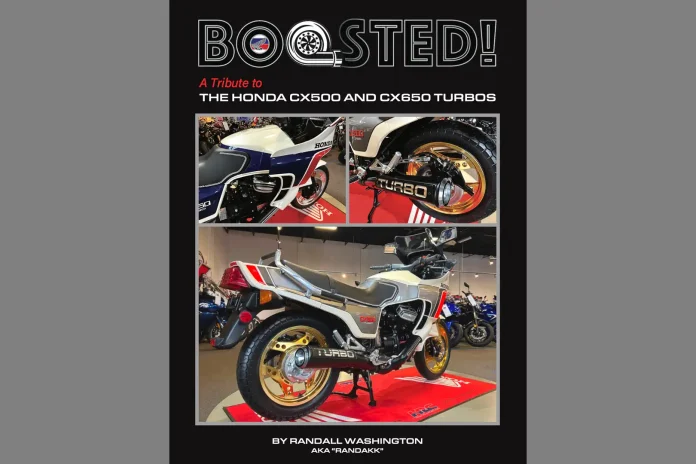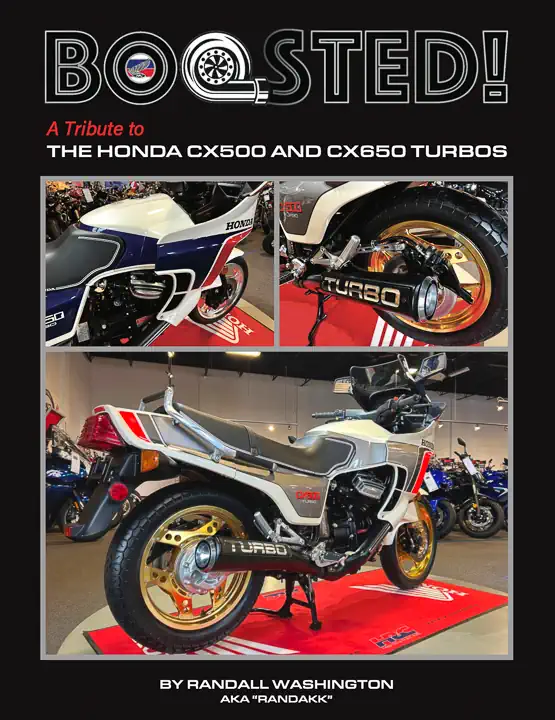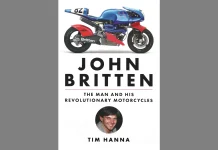You might think that a book devoted to praising any specific vehicle, even a motorcycle, is bound to be dry, overly technical, and fabulously unentertaining. And, you’d be wrong, at least in the case of Boosted! A Tribute to the Honda CX500 and CX650 Turbos by Randall Washington (aka Randakk), just released by Turbinem Press.
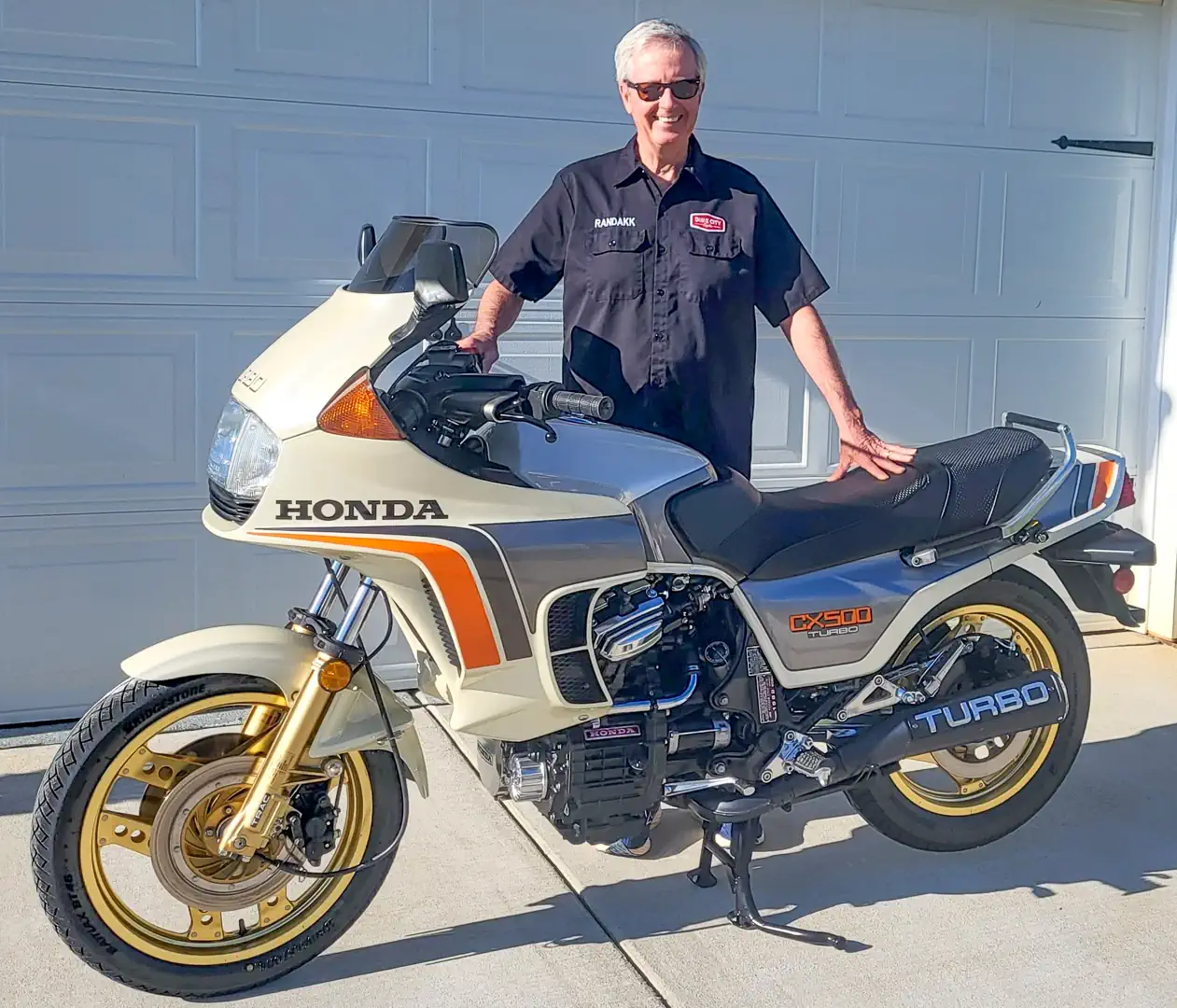
Contrary to what you might expect, Washington has found a way to make his new book remarkably entertaining with humor and personal insight, little-known brand and model history, a clearly explained technical background, and complete specifications in easy-to-read spreadsheets. Boosted! is lavishly illustrated with more than 270 color and black-an-white images, as well as line drawings and illustrations.
Among the images is a never-before-published color image of a prototype aesthetic design for the CX500 created by noted Italian automotive designer, Giovanni Michelotti, which had been delivered to Honda in 1979.
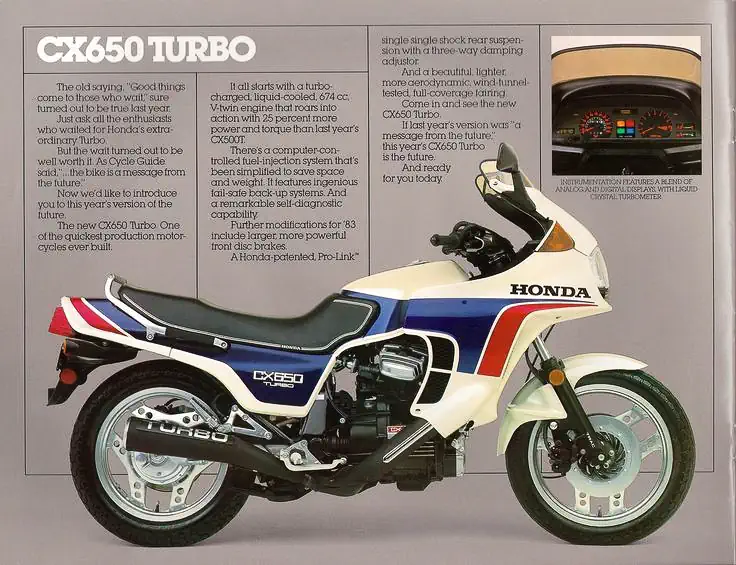
Washington provides a remarkably detailed description of the design team responsible for the normally aspirated versions of the CX500, as well as the later CX500TC and CX650TC. He covers the areas of responsibility and roles in the Honda organization for key members of the design team, including Managing Director for Honda Research and Development, Shoichiro Irimajiri; Director of Honda R&D during the Turbo period, Hiroshi Kamayama; Kazuo Inoue, the top engineer in Honda R&D engine division; Minoru Morioka, Chief Honda Design/Stylist on the CX500 Turbo project; and Yoshitaka Omori, who created the early full-scale clay mock-ups for the new models.
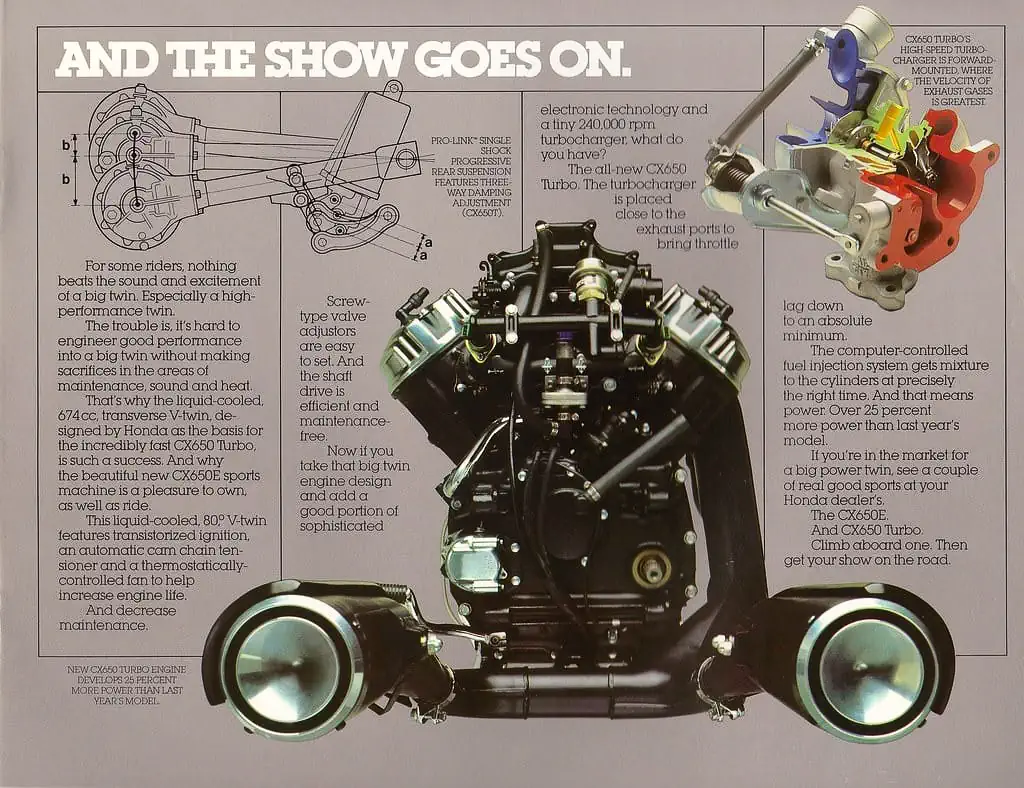
In addition to these leaders, Washington reveals that more than 50 Honda engineers were directly involved in the CX series of bikes from the normally aspirated originals to the turbocharged models.
To those unfamiliar with just how different a turbocharged engine is from one that is normally aspirated, Washington’s description of the issues that had to be resolved in taking the CX models from one form to the next is enlightening.
To do that, Washington provides a listing of objectives Hiroshi Kanayama and his team had to achieve to make the CX500TC a rideable street machine:
- Optimizing the surge tank volume
- Optimizing the sizes of the exhaust turbine, compressor unit, and their housings
- Determining the ideal placement and volume of the resonance chamber
- Reducing uneven cylinder pulses from the irregular firing of the 80-degree V-twin
- Maintaining head pressure above the throttle plates for better throttle response at low rpm
- Preventing pressure drops at high rpm
- Reducing stagnation in the intake tract and reducing lag at all engine speeds
Honda found that simply boosting intake air pressure while using existing carburetor technology didn’t deliver satisfactory results. Washington explains the rationale for the transition from carburetors to electronic fuel injection, and covers the unique operational features of the Honda EFI systems as paired with the turbocharger.
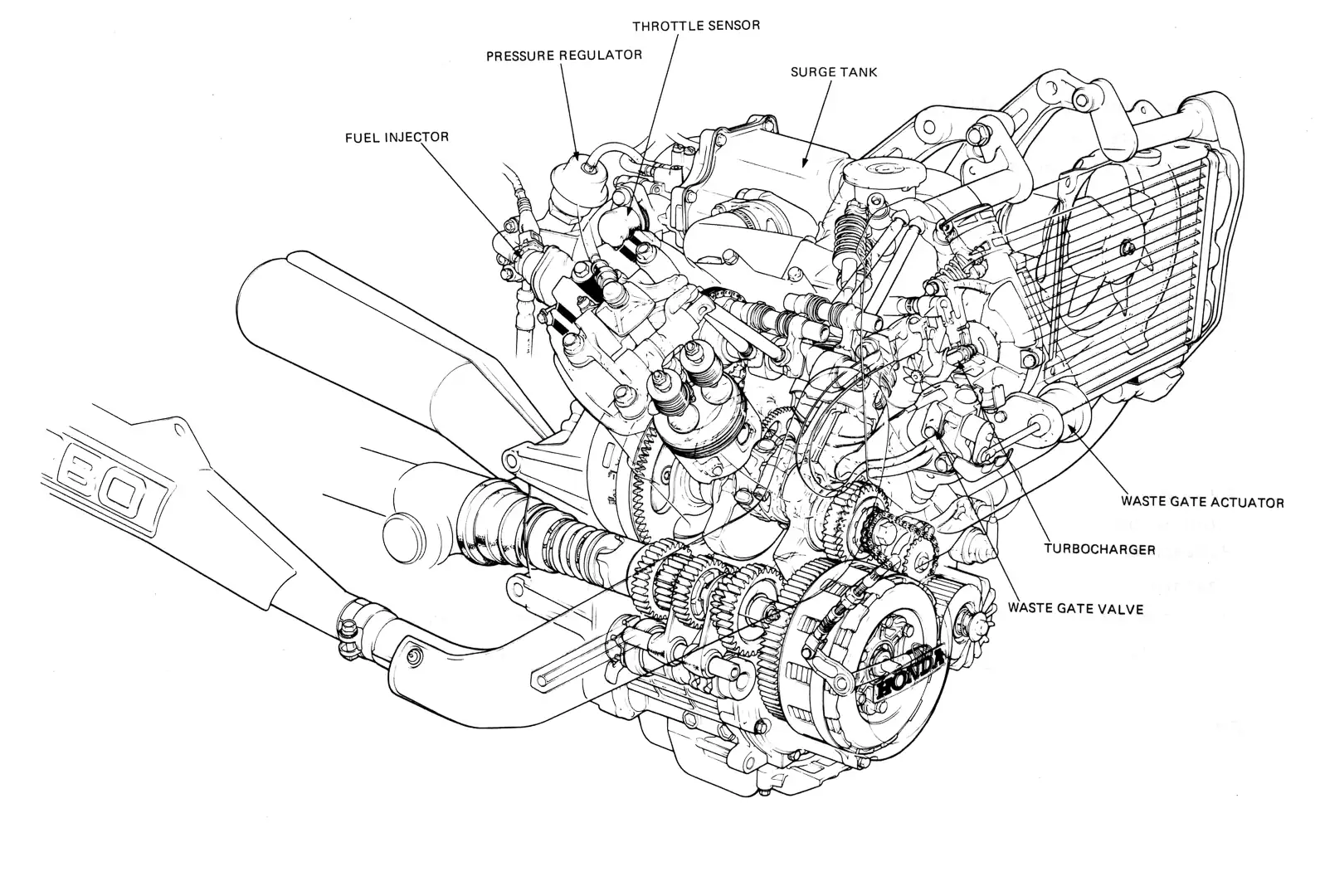
With the technical complexity of turbocharging, and the fact that BMW and others had successfully equipped racing bikes with superchargers years ago, why didn’t Honda simply use supercharging instead? Washington does a great job covering that, as well.
The author reveals that the challenges were not only complex engineering problems related to engine operation and performance, but also practical safety problems that had to be addressed in terms of aesthetic design.
Washington quotes Minoru Morioka describing one such problem in an interview published in Honda Design Motorcycles, Part 1, 1957-1984:
From the styling point of view, we had to take into consideration that the turbo generated a lot of heat. When the motorcycle was ridden, both the turbo and the exhaust pipes would become red hot. Perhaps our biggest worry while designing the bike was what to do if the gasoline should ever overflow during refueling and spill onto the hot turbo or exhaust pipe. We were seriously worried that it could cause a fire.
The book provides surprising details on the design approaches taken to deal with that potential problem. Those approaches contributed to the unique styling of the Turbo models’ bodywork.
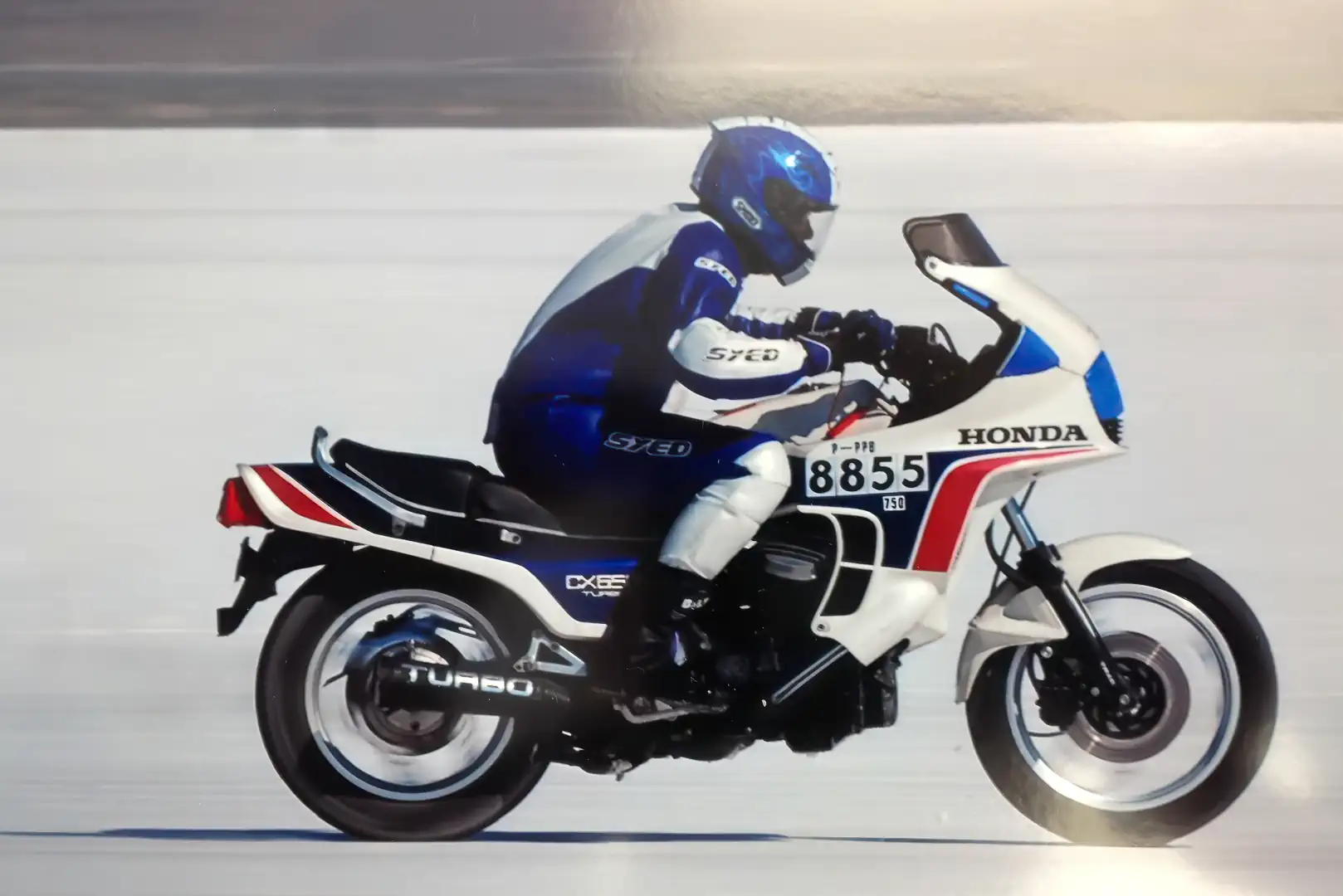
Washington includes a fascinating chapter on the phenomenon attributed to turbocharged vehicles, including the Honda Turbos, known as “turbo lag.” It’s the hesitation followed by an acceleration surge when the throttle is rapidly opened at low rpm. Washington explains that this perception is more a function of engine speed management than an actual characteristic of turbocharged vehicles. His solution is simple when riding a Honda Turbo: keep the engine speed above 4000 rpm when cruising.
Boosted! is one of the most comprehensive resources on the remarkable Honda CX Turbo models of 1982-83. Washington provides production data, insight on marketing, design weaknesses and strengths, product improvements, performance data, technical specifications, tips for potential buyers of the turbo models, restoration, maintenance, great information on technical resources, tips on owning and riding, competition history, a look back at other vintage Japanese turbo bikes, and guidelines for stewardship and preservation.
After reading Randall Washington’s Boosted! A Tribute to the Honda CX500 and CX650 Turbos, I now rather regret not leaping at the chance to buy a CX650 Turbo last year from a local owner. It was in pristine condition, with an original 3.9 miles on the odometer. Although I didn’t need another bike at the time, knowing what I know now about the Turbo bikes from Honda, I may well have decided that having a Turbo could be a good, fun investment!
Boosted! Fast Facts
- Title: Boosted! A Tribute to the Honda CX500 and CX650 Turbos
- Author: Randall Washington aka Randakk
- Format: Softcover, 144 pages, 274 color and black-and-white images, plus illustrations and specification sheets.
- Published: July 2025
- Publisher: Turbinem Press, Conover, North Carolina
- ISBN: 979-8-218-63595-4
- Boosted! cover price: $60, ordered direct from Turbo Enterprises by Randakk


